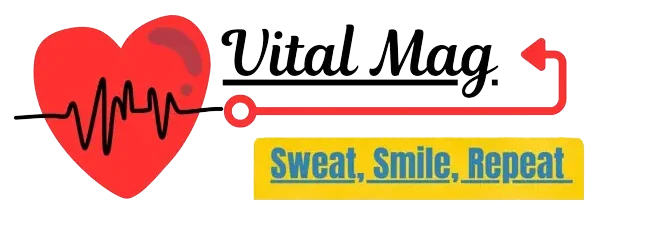Introduction
Brazilian Jiu-Jitsu (BJJ) is one of the most effective martial arts for self-defense, fitness, and personal growth. Whether you want to get in shape, learn self-defense, or compete, starting BJJ can be a life-changing experience. If you’re wondering how to start Brazilian Jiu Jitsu, this guide will walk you through everything you need to know.
Bravo BJJ is offering Custom gi bjj in different colors and styles, making it easy to find a gi that matches your personality and preferences. Let’s dive into the essential steps to begin your BJJ journey.
1. Why Start Jiu Jitsu?
Benefits of BJJ
Starting Jiu Jitsu offers numerous physical and mental benefits:
- Full-body workout – Enhances strength, flexibility, and endurance.
- Self-defense skills – Learn techniques to protect yourself in real-life situations.
- Stress relief – Rolling (sparring) helps reduce anxiety and build resilience.
- Community and friendships – Train with a supportive group of like-minded individuals.
- Mental sharpness – Improves problem-solving and adaptability.
If you’re looking for a dynamic way to stay fit while learning valuable skills, BJJ is an excellent choice.
2. How to Start Brazilian Jiu Jitsu for Beginners
Finding a BJJ Gym
The best way to start BJJ is by joining a reputable gym. Here’s what to consider when choosing a school:
- Qualified instructors – Ensure they have experience and credentials.
- Welcoming environment – Visit and observe a class to see if it’s beginner-friendly.
- Clean facilities – Hygiene is crucial for preventing skin infections.
- Flexible class schedules – Make sure the timings work for you.
What to Expect in Your First Class
Your first BJJ class might feel overwhelming, but here’s a typical structure:
- Warm-up: Stretching, body-weight exercises, and movement drills.
- Technique lesson: Learning a fundamental move like guard passing or escapes.
- Drilling: Practicing the technique with a partner.
- Rolling (sparring): Light sparring for beginners, if applicable.
Wear comfortable athletic clothing if you don’t have a gi yet. Most gyms allow beginners to try a few classes before committing.
3. How to Start Brazilian Jiu Jitsu at Home
If you can’t access a BJJ gym right away, you can start learning at home.
Essential Solo Drills
Practicing solo drills can improve your movement and coordination:
- Shrimping – Helps with escaping bad positions.
- Bridging – Builds hip strength and defense mechanics.
- Technical stand-up – A crucial self-defense move.
- Toreando footwork – Enhances guard passing skills.
Using Online Resources
Many high-level BJJ practitioners offer online courses and instructional videos. Platforms like BJJ Fanatics, YouTube, and Gracie University provide excellent beginner-friendly lessons.
4. What Gear Do You Need to Start BJJ?
BJJ requires minimal equipment, but having the right gear makes a big difference.
Gi vs. No-Gi
- Gi BJJ – Traditional, with a kimono and belt; emphasizes grips and control.
- No-Gi BJJ – Practiced in rash guards and shorts; focuses on speed and fluidity.
Most beginners start with gi training. You can buy BJJ gi in different colors and styles on a Brazilian Jiu Jitsu store, ensuring you have high-quality options for your training.
Other Essential Gear
- Mouthguard – Protects your teeth.
- Rash guard – Worn under the gi to prevent rashes and skin infections.
- Athletic cup (for men) – Provides protection during rolling.
- Knee pads – Useful for added support and injury prevention.
5. How to Get Better at Brazilian Jiu Jitsu
Training Consistently
- Train at least 2-3 times per week to see progress.
- Focus on quality over quantity – good technique matters more than just mat time.
The 80/20 Rule in BJJ
This principle suggests that 80% of your results come from 20% of techniques. Focus on fundamental moves like:
- Guard retention – Staying in control when on the bottom.
- Escapes – Learning how to get out of bad positions.
- Sweeps – Transitioning from defense to offense.
Avoiding Common Mistakes
- Don’t rely on strength over technique.
- Tap early to avoid injuries.
- Stay humble and patient – progress takes time.
6. What to Expect in Your First BJJ Class
- Arrive early to introduce yourself to the coach.
- Follow the gym’s etiquette, such as bowing before entering the mat.
- Don’t be afraid to ask questions – BJJ is a learning process.
- Relax and have fun – everyone was a beginner once!
7. Frequently Asked Questions (FAQs)
Can I Teach Myself Brazilian Jiu-Jitsu?
While you can practice solo drills and watch videos, training with a partner and an experienced instructor is crucial for proper development.
How to Start BJJ as a Beginner?
Find a gym, get the right gear, learn basic positions, and be consistent in training.
What is the 80/20 Rule in BJJ?
It means that focusing on fundamental techniques (about 20%) will yield the most progress (about 80%).
Is Brazilian Jiu-Jitsu Good for Beginners?
Yes! BJJ is designed to be accessible to all fitness levels and body types, making it an excellent choice for beginners.
Conclusion
Starting Brazilian Jiu-Jitsu is a rewarding journey that challenges you physically and mentally. Whether you train at a gym or practice at home, consistency and patience are key. Don’t forget to invest in quality gear – Bravo BJJ offers custom gi bjj in various styles and colors to suit your needs.
Now that you know how to start BJJ, take the first step and get on the mats! You won’t regret it.
MEDIA CONTACT
Contact Person: Umair Rizwan
Company Name: Bravo BJJ
Email: social@bjiujitsu.com
Website: https://bjiujitsu.com/
Country: United States

